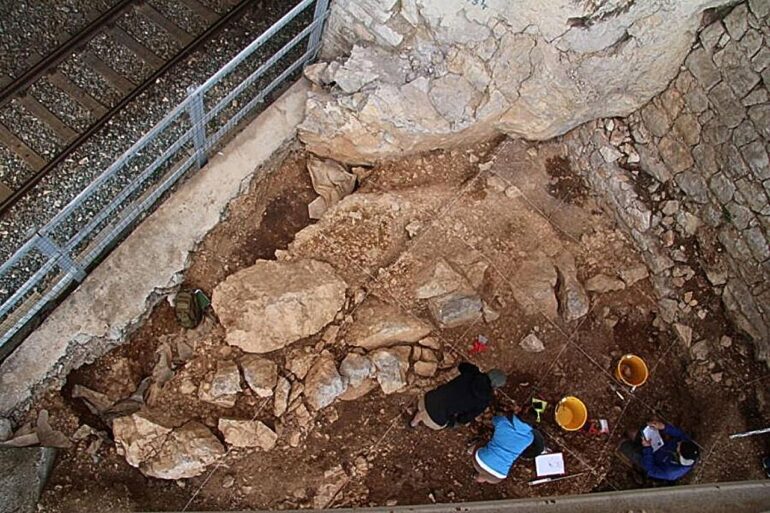In a study published in the Journal of Archaeological Method and Theory, archaeologists from Université de Montréal and the University of Genoa reveal that far from being more primitive, Neanderthals did much the same as their Homo sapiens successors: made themselves at home.
Analyzing artifacts and features of the Protoaurignacian and Mousterian levels of the Riparo Bombrini site in northwestern Italy, the scientists uncovered common patterns of settlement between the two populations.
By mapping the distribution of stone tools, animal bones, ochre, and marine shells across the surface of the site, they were able to produce clear and interpretable models of the site’s spatial patterns, identifying distinct clusters of artifacts and materials to infer the behavioral significance of the different groups that lived and worked there.
“This homogeneity in spatial distribution hinted at an underlying structure in how these ancient humans utilized the space,” said Amélie Vallerand, the UdeM doctoral student who led the study, co-authored by UdeM’s Julien Riel-Salvatore and UGenoa’s Fabio Negrino.
“By tallying the number of contiguous units of the same type of clusters, we could discern patterns to help us identify the activities carried out by these groups,” said Vallerand. “Applying quantitative and statistical methods allowed us to significantly reduce bias, and to provide compelling evidence that goes beyond qualitative descriptions of the spatial organization.”
Combining these spatial analyses with studies of lithic technology, faunal remains and marine shells, the researchers were able to paint a comprehensive picture of the behavioral similarities and differences between these ancient populations.
Among the similarities:
Both Neanderthals and Homo sapiens exhibited a structured use of space, organizing their living areas into distinct high and low-intensity activity zones. This suggests a shared cognitive capacity for spatial organization.
The central tendencies of occupation for both groups were established through thousands of years of reoccupation: the recurring position of the site’s inner hearths and a refuse pit persisting across levels highlights the continuity of the layout.
The organization of all three levels was conditioned by land-use and mobility strategies: they articulate around variations in occupation duration, reoccupation intervals, number of occupants, and nature of activities undertaken. Hence, planning and organization were key.
But there were also differences:
Neanderthal occupations showed a lower intensity pattern compared to those of Homo sapiens : artifact densities were lower-deposit and fewer clusters were identified.
There are distinct distributions pattern and use of space for each of the levels: Neanderthals used Riparo Bombrini sporadically as part of a high mobility system in the context of rapid climatic change, while Homo sapiens alternated between short-term and long-term base camps to adjust to their new territory.
The Neanderthal-to-Homo sapiens transition in Liguria was characterized by the rapid succession of the Late Mousterian (Neanderthal) to the Protoaurignacian (Homo sapiens) techno-complex, with no contacts observed between the two species.
This new study underscores the significance of directly comparing the spatial behavior of Neanderthals and Homo sapiens within the same site, using consistent parameters, to minimize analytical bias.
Overall, the authors conclude that “there’s an underlying logic to how the space was used,” regardless of which species was present at the time.
Vallerand added, “Like Homo sapiens, Neanderthals organized their living space in a structured way, according to the different tasks that took place there and to their needs. So this is yet another study indicating that Neanderthals were more ‘human’ than is generally assumed.”
More information:
Amélie Vallerand et al, Homo sapiens and Neanderthal Use of Space at Riparo Bombrini (Liguria, Italy), Journal of Archaeological Method and Theory (2024). DOI: 10.1007/s10816-024-09640-1
Provided by
University of Montreal
Citation:
Archaeologists find that Neanderthals and Homo sapiens organized living spaces similarly (2024, April 8)



